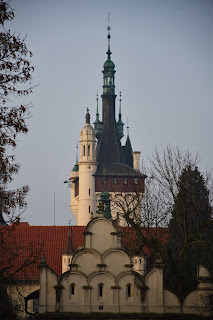Dali Dairy Diaries
I spent
very little time in class before it was time to pack up and start travelling
again: CET’s midterm trip to Dali, a city about six hours away from Kunming. Sitting
on some very lucrative trade routes, Dali was the capital of the Nanzhao
kingdom, a state that successfully repealed several Chinese invasions, resisted
Tibetan expansion, and waged wars of its own in modern day Vietnam and Myanmar.
After its golden age in the eighth and ninth centuries, Nanzhao fell to
dynastic squabbles that led to the establishment of the Dali Kingdom, a
somewhat less powerful state that fell to Kublai Khan in 1253. The indomitable
spirit of the Yunnanese, however, was not extinguished. During the Panthay
Rebellion of 1856-1873, Dali was the capital of a sultanate that for a long
time held its own against the Manchu government. Like Nanzhao, it too was
defeated, but not until a protracted bloody war that cost perhaps a million
lives. (Much of this information comes from websites not blocked by the Chinese
government, namely Encyclopaedia Britannica and Wikia: https://www.britannica.com/place/Nanzhao
and https://military.wikia.org/wiki/Panthay_Rebellion).
Today, Dali
is mostly known for its history, culture (the Bai people who founded Nanzhao
still make up around two thirds of the city’s population) and dairy – allegedly
popularised by the Mongol invaders. Incidentally, the yoghurt I had on the
morning of our ride to Dali claimed to originate from Dali dairy farms.
We arrived
in Dali around five o’clock and got to spend the evening as we pleased. I set
off as soon as we checked in without really having any plan besides salvaging
what was left of the day. After consulting the map application on my phone, I
decided to go to Chongsheng Temple, whose three pagodas make it one of the most
recognisable attractions of Yunnan. It was a rainy day, but not one of those
ugly days with uniformly grey skies and no sunshine. At the northern edge of
Erhai lake, the sky had started to clear up, while thick milky clouds lay
languidly on the hills above Chongsheng Temple. It made for a wonderful scene.
While visiting, I was awed to discover that there was much more to the temple
than just the three pagodas: Behind it was a whole complex of massive
structures, each housing some of the biggest and most magnificent Buddhist
statues I have ever seen (I should perhaps qualify that by saying ‘indoor
statues,’ because it’s difficult to compete with the Tian Tan Buddha or the
many massive statues of Buddha dotting the landscape of Sri Lanka).
A very tall pagoda on the way from Kunming to Dali
Dali's architecture is known for employing white motifs.
Chongsheng Temple from a distance
Travelling monks taking pictures at Chongsheng
The famous three towers of Chongsheng Temple
Buddhist amulets
The three towers from behind
Rainy Copper Guanyin Temple (part of the Chongsheng Temple complex)
The upper part of Chongsheng Temple
The gate to Chongsheng Monastery
Ornate wooden beam for striking Buddhist bells
Maitreya Temple
Several storey-tall Maitreya
A display of gifted Buddha statues
In the
evening, I briefly popped in and out of Dali’s own town, which was in many ways
quite reminiscent of the old town in Lijiang – with the exception that Dali has
some very imposing city walls and towers. At a restaurant right outside the
southern gate, my phone did not have enough power to be of any use in
deciphering the menu, so I asked the waitress to recommend me a vegetable dish.
To my surprise, I was given a plate of delicious okra, one of my favourite
foods.
A mosque in Dali
Dali's old town
Dali South Gate
Dali South Gate at night
Dali's old town at night






















Comments
Post a Comment